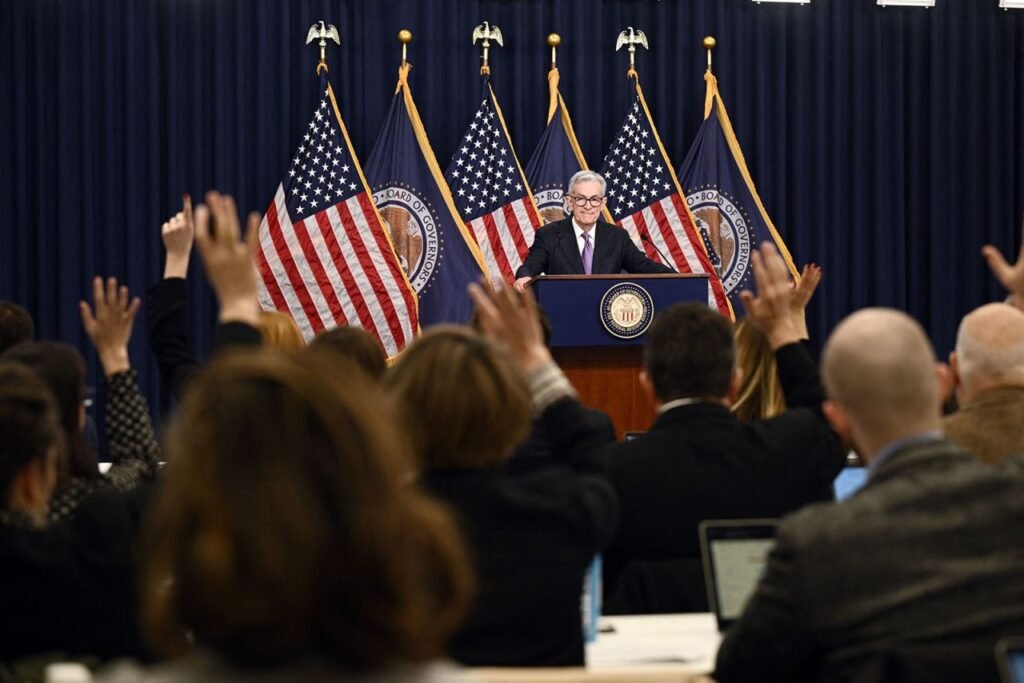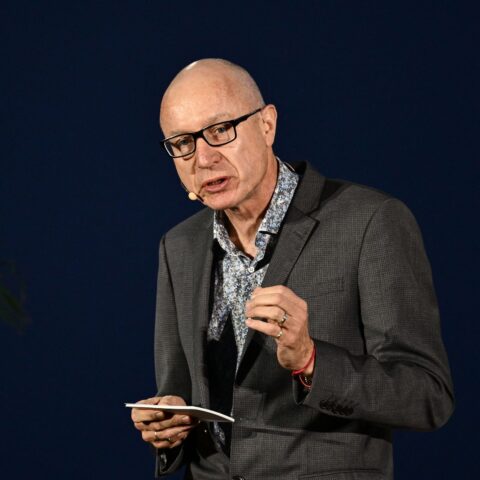Contents
In a decisive meeting, the Federal Open Market Committee (FOMC) unveiled a notably softer stance, influenced by recent declines in inflation. The focus has shifted toward cushioning the economy rather than aggressively targeting a return to the 2% inflation mark. There’s a marked contemplation on rate reductions, signaling a significant change in approach.
Key Highlights:
- FOMC maintains current interest rates, signaling a likely halt in rate hikes.
- Projection suggests increased chances of rate cuts next year, surpassing analyst expectations.
- Economic activity exhibits weakness compared to the previous quarter, prompting moderated job gains and inflation.
- Chairman Powell emphasizes a shift in focus towards employment, departing from a sole emphasis on curbing inflation.
- Market projections of a 115-basis point cut for the following year remain uncorrected by the Fed, signaling a shift in policy approach.
FOMC Fed’s Firm Decision
As anticipated, the FOMC maintained current rates, indicating a probable cessation in rate hikes. Moreover, they adjusted their guidance, projecting an increased likelihood of rate cuts next year, surpassing analyst expectations. Economic activity, as emphasized in the statement, showed signs of weakness compared to the previous quarter, with moderated job gains and inflation. Despite recent relaxations, the statement highlighted enduring tight financial conditions that might continue to impede further economic ease.
Read More: U.S. Core PPI, FOMC Rising: Important Economic Highlights December 2023
Chairman’s Reassessment
During the press conference, Chairman Powell expressed satisfaction with the dip in inflation figures. He hinted at a shift in focus towards employment, a notable departure from the prior emphasis solely on curbing inflation. This rapid shift in priorities implies less fixation on reaching the 2% inflation mark and more concern about maintaining optimal rates—a stark contrast to previous messages.
Market Response and FOMC Stance
Markets entered the meeting projecting a 115-basis point cut for the following year. While Chair Powell didn’t counter this outlook directly, the Federal Reserve’s reluctance to address high inflation earlier has perhaps influenced their current approach, leading to a more accommodative stance than witnessed in recent years.
Previously cautious about relying solely on goods inflation declines, the Fed now appears confident in expecting wage moderation to drive down service inflation. However, surprises could arise considering ongoing payroll increments and a rise in labor participation predominantly attributed to immigrant workers.
Read More: Consumer Prices Show Slight Increase of 0.1% in November
Shifting Rate Outlook
The shift in the Fed’s perspective necessitates a recalibration of rate predictions. Tonight’s announcements have significantly lowered the barrier to rate cuts, marking a pivotal change in the Fed’s trajectory.
The Federal Reserve, in its third consecutive meeting, has opted to maintain interest rates. A significant pivot emerges with clear indications of a forthcoming series of cuts next year, marking an end to their aggressive hiking campaign.
FOMC Chair Powell’s Outlook
While Chair Jerome Powell remains open to future rate hikes in case of inflationary pressures, the focus has notably shifted towards contemplating rate reductions as inflation steadily approaches the 2% target.
Treasuries and stocks surged following the meeting, with increased speculation of a March rate reduction. The quarterly projections reveal a sharper pace of cuts next year than previously indicated.
A nuanced change in the post-meeting statement highlights the Fed’s readiness to monitor data and developments for appropriate policy adjustments. Acknowledgment of easing inflation and a balanced view of price growth risks reflect a notable shift in tone.
Forecast and Economic Projections
Lowered inflation forecasts for the coming years and a slight dip in economic growth projections accompany the anticipation of further reductions in the fed funds rate by 2025.
Bloomberg Economics suggests that the FOMC’s alignment with market rate cut expectations signifies an endorsement of a soft-landing scenario, acknowledging the current slowdown in price pressures and labor market conditions.
With the pivot following a series of rate hikes, the Federal Reserve faces the challenge of timing rate cuts appropriately, without jeopardizing the return of inflation to the 2% target.
FOMC Yield Trends and Economic Impact
The recent pullback in Treasury yields, erasing previous gains, is already affecting the economy through reduced mortgage rates and increased borrowing ease for companies.
Chair Powell’s recent comments indicate a significant shift from earlier remarks, aligning more with market expectations for a potential rate cut in the first quarter of the upcoming year.
This comprehensive review encapsulates the pivotal decisions and shifts in tone from the Federal Reserve, signifying a significant departure from previous strategies in response to evolving economic conditions.
Conclusion
The Federal Reserve’s recent meeting showcased a distinct pivot in policy, steering away from a stringent focus on curbing inflation to contemplating rate cuts for economic stabilization. With indications pointing towards a potential shift in monetary policy, markets and economists are observing this pivotal change closely. The projection of a softer stance and potential rate reductions signifies the Fed’s adaptation to evolving economic conditions, aiming for a balanced approach towards maintaining economic stability and growth.








